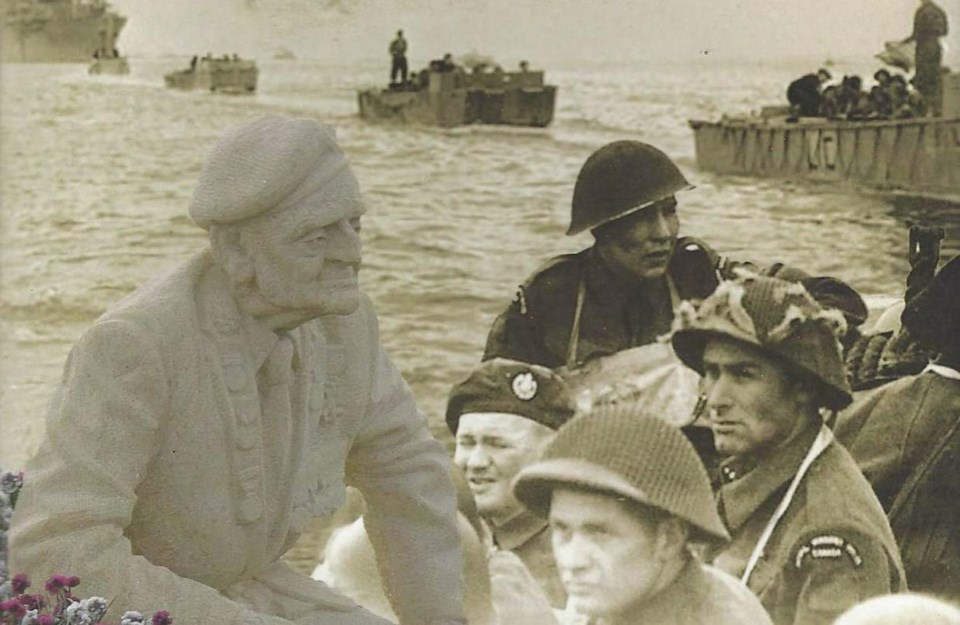On Nov. 11, Canadians across the country reflect on war. Many drop by a cenotaph or visit the family cemetery. Still others listen to military concerts or join in public Remembrance Day events that describe the experience of war, its impact on human life and its generational legacy.
Sturgeon County author Don Levers instead chose to honour the soldiers who fought in Second World War trenches by releasing his first non-fiction book, Our Father’s Footsteps: Stories of World War II Veterans' What If Moments.
Levers did his due diligence researching periodicals, news features, broadcasts, videos and web blogs. To recreate a realistic pre-war and wartime landscape, he borrowed extracts from letters, emails, memories, family stories and journal entries.
One of the soldiers Levers writes about is his father, Gerry Wallace Levers, a member of A Company, The Royal Winnipeg Rifles. He landed on Juno Beach on D-Day in 1944. It was the Allies' largest invasion, bringing together 156,000 land, air and sea forces. Unfortunately, the Allies' total casualties reached 10,000, about two-thirds the seating capacity at Rogers Place. Canadians suffered 1,074 casualties, including Gerry.
“I read Dad’s diary and it went on to list the casualties, and two soldiers he knew were captured and murdered. It made me realize, 'what if he hadn’t been wounded on June 6?' Perhaps his fate could have been much worse,” Levers said.
“I hope people who read this book realize how lucky they are to be alive. There were 359 Canadians killed on D-Day. My father was there, and I consider myself very fortunate to be here. What if he had been killed? I wouldn’t be here.”
The 323-pages of non-fiction is surprisingly exciting to read. Unlike some wartime books larded with chapters on shellings and bombings, Levers injects descriptive scenes of locations from the innocent and semi-idyllic prewar lives to the noisy front lines and blood-soaked makeshift field hospitals.
This was an era where traumas were endured, and lifelong friendships gained. In the final analysis, the soldiers he describes are survivors, men who returned home and reconciled their lives building families and communities.
Levers divides the book into four segments representing the stories of four soldiers. They are his father Gerry, a member of A Company, The Royal Winnipeg Rifles; Johnny Grant Nearingburg, Highland Light Infantry of Canada; George Henry (Harry) Hildyard, 999th Port Operating Company, Royal Engineers; and John Hedley Hamilton, A Company 7 Platoon Royal Winnipeg Rifles.
The life of each man is painted with gentle brush strokes, yet the some of the war scenes are heartbreaking. One eye-opener details Harry, stiff and bone-tired retreating to his bivouac after a double shift.
Before falling asleep “He covered his body with a blanket from his pack, then rested his rifle against the wall of the slit trench in case the Germans counter attacked. Finally, he set his helmet on his face to protect it from shrapnel,” writes Levers.
In a couple of short sentences, the skilled author crafts a shocking reminder of war’s brutality and how it changes lives forever.
In another segment, this time with John Hedley Hamilton’s experiences, Levers delves into trench foot. Soldiers were encouraged to report any sign of trench foot, a serious condition that caused feet to blister, become blotchy and then dry out. This caused the skin to flake and peel off, producing a great deal of pain, numbness and itching.
“Jack figured sore feet might be the least of his worries and was more concerned about a bullet to the head,” writes Levers.
Levers has a passion for keeping history alive through meticulous research while re-imagining the human condition in all its stages and elements.
“I’ve been asked if I’m a good storyteller. I can’t answer that. But if I’m able to convey in writing something you found interesting and compelling, I’ve done my job.”
Levers is hosting a reading and book signing on Thursday, Nov. 10 at Perron Bookstore, 7 Perron Street from 6:30 p.m. to 8 p.m.




